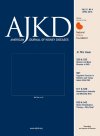Long-term Glycemic Variability: A Variable Glycemic Metric Entangled With Glycated Hemoglobin
Primacy is often given to time-averaged mean glycemia as indicated by glycated hemoglobin (HbA1c) when considering the risks of diabetic complications from hyperglycemia. However, emerging evidence suggests that glycemic variability (GV), simply defined as the degree of short-term or long-term glucose fluctuations between peaks and nadirs, may represent an additional risk factor beyond static HbA1c in patients with diabetes.1,2 GV has been implicated in endothelial dysfunction, oxidative stress, and inflammation—providing potential mechanistic links to adverse clinical outcomes such as diabetic kidney disease or cardiovascular events.



